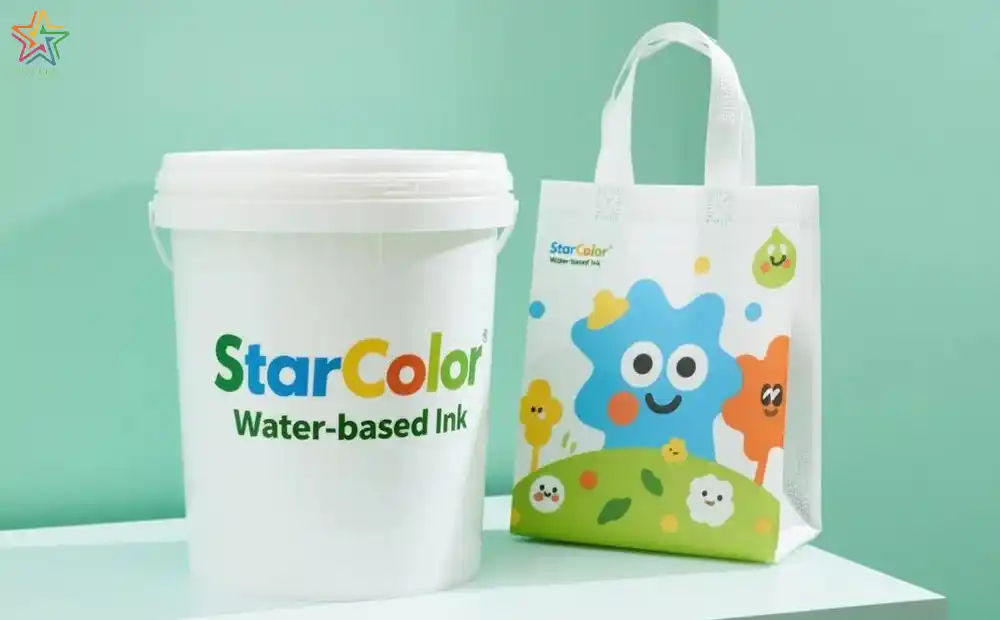Water-Based Ink: Can It Degrade in the Environment?
Date: May 28 2025 From: Star Color Views:
Water-based inks are environmentally friendly printing materials widely used in packaging and printing due to their low VOC emissions and minimal odor. But can water-based inks degrade? What is their actual degradation performance? This article deeply explores their degradation characteristics from the aspects of composition, degradation principles, influencing factors, and practical applications.
I. Degradation Principles and Processes of Water-based Inks
The degradation of water-based inks primarily relies on biodegradation, where microorganisms (such as bacteria and fungi) play a dominant role. When water-based inks enter environments like soil or water bodies:
- Microbial Decomposition: Microorganisms secrete various enzymes that break down the organic components in water-based inks. For example:
- Lipases decompose ester-based substances in resins and additives, converting them into fatty acids and alcohols.
- Proteases break down protein-based organic components.
Through a series of enzymatic reactions, complex organic macromolecules are gradually decomposed into small molecules like carbon dioxide, water, and inorganic salts.
- Redox Reactions: In aerobic environments, some components of water-based inks undergo oxidation. Reductive organic pigments and additives react with environmental oxygen under microbial action, gradually decomposing. In anaerobic environments (e.g., anaerobic sludge), reduction reactions may convert certain components into harmless substances.
This degradation process is complex and influenced by multiple factors, affecting both its speed and extent.
II. Key Factors Influencing Water-based Ink Degradation
- Environmental Conditions
- Temperature: Moderate temperatures (25°C–35°C) enhance microbial activity and metabolic rates, accelerating degradation. Extreme temperatures inhibit microbial growth and slow down degradation.
- Humidity: Sufficient moisture is essential for microbial survival and metabolism. Wet soil or water environments facilitate microbial contact with inks, speeding up decomposition.
- pH Level: Most microbes involved in ink degradation thrive in neutral or weakly alkaline environments. Extreme acidic or alkaline conditions reduce microbial activity and impair degradation efficiency.
- Ink Composition
- Resin Type: Water-based inks with high biodegradable resin content exhibit better degradation performance in natural environments.
- Pigment Properties: Inorganic pigments are generally difficult to biodegrade, while the degradability of organic pigments depends on their chemical structure. Simple structures without halogen elements or complex benzene rings are more easily decomposed by microbes.
- Additive Composition: Some additives may be toxic to microbes, inhibiting their growth and metabolism and thus affecting degradation.
III. Practical Applications and Validation of Water-based Ink Degradation
Numerous studies and real-world applications have verified the degradation performance of water-based inks:
- Laboratory Tests: In simulated natural environments (e.g., soil or water culture media), water-based inks show significant degradation. Under optimal conditions, some inks achieve a 60%–80% degradation rate of organic components within 3–6 months. Water-based inks with plant-based resins are almost completely decomposed in laboratory soil simulations after 6 months.
- Real-world Applications: In food packaging and paper printing, discarded products printed with water-based inks partially degrade alongside paper recycling. In eco-friendly composting, inked paper waste decomposes with the paper into organic fertilizers, realizing resource recycling.
It is important to note that not all water-based inks degrade well. Low-quality products may contain non-degradable chemicals to meet performance standards, leading to slow or incomplete degradation in natural environments.
IV. Directions for Enhancing Water-based Ink Degradation Performance
- Formula Optimization: Developers can prioritize biodegradable resins, pigments, and additives, such as plant-derived pigments and bio-based additives instead of synthetic chemicals.
- New Technology Development: Nanotechnology and biotechnology can modify ink components to improve degradation efficiency. For example, nano-catalysts can accelerate environmental chemical reactions in inks.
- Improved Recycling Systems: Dedicated recycling systems for water-based ink waste, using combined physical, chemical, and biological treatments, can enhance degradation and resource utilization.

Conclusion
Water-based inks have
100% degradability in theory, but actual degradation depends on environmental conditions, formulations, and raw materials. Under ideal environments and high-quality formulations, they can degrade effectively and reduce environmental pollution. However, due to inconsistent product quality in the market, the degradation performance of some water-based inks still needs improvement.
To ensure the green and sustainable development of the printing industry, continuous technological innovation and regulatory support are essential. As a printing ink manufacturer, Zhongzhixing has always been committed to developing and producing more environmentally friendly water-based inks. Welcome to consult us for more details.
 RU
RU
 EN
EN
 CN
CN

